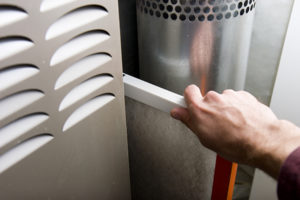Air Filters in the Lewiston Clarkston Valley Area
Air Conditioner Not Working? Check:

- YOUR FILTER. Is it dirty? If yes, change it.
- Does your copper line set have ice? If yes, turn off your air conditioner and turn the fan setting from “AUTO” to “ON” at the thermostat.
- Check your power. Make sure there are no tripped breakers. (If you flip the AC breaker on and it trips immediately, DO NOT TURN IT BACK ON.)
- Now, call Kinzer Air at 208-746-8247.
- Relax, we’ve got this.
Air Filters in the Lewiston Clarkston Valley Area
Changing your Air Filters in the Lewiston Clarkston Valley Area are just as important as getting you car’s oil changed. Your heating and cooling equipment works day in and day out to keep you comfortable. While no one would drive their car everyday for a year without getting an oil change, the same is true for changing your air filters.
Dirty Filters?
- Means everything past the filter is dirty too, including the air you breathe. This pumps your home full of dust and allergens.
- Speaking of allergens, they can cause a number of physical symptoms like headaches, fatigue, tightness in your chest, and a mess of cold symptoms you may not be able to shake. A dirty air filter may be ineffective in controlling them.
- Reduced air flow. AC units are designed to work with a certain amount of internal air flow, and if that isn’t being met the AC may malfunction and ultimately fail. It can also raise your energy bill as your system struggles to take in air.
- Cooling inefficiency. When dirt gets onto the cooling coils, it lets frost build up on the coils and the fans, which makes it more difficult for the unit to cool your house.
- Skyrocketing power bills. Between the cooling inefficiency and the reduced air flow, a dirty air filter means your A/C has to work much, much harder in order to cool your house, which means it takes more power to fuel it. You may not realize how much money could be saved by simply changing the filter.
How often should I change my filter?
Here is our rule of thumb- 1” thick filters- monthly. 2″ thick filters- every three months, 4″ thick- every 6 months. However, you may need to change it more frequently if you have indoor pets (they shed) and/or several people (more traffic) living in the house.
Got Filters?
We do and we’ll sell them to you. We sell filters individually and we always offer a 10% filter case discount everyday of the year.
Okay, I bought a filter. Which way does the arrow on the filter go? It goes the same direction the air flows. Not sue what direction that is, briefly turn the fan on to verify the direction the air flows.
Why does it matter?
The answer lies in the way the air filter is built. Manufacturers design furnace filters with the intention that air flows in one direction through the filter material. That way, the filter does its job of preventing dust from accumulating on blowers and motors inside the furnace. While an occasional backward filter installation is not likely to cause damage to the system, it can cost you money in efficiency. The front side of the filter is the filter media (commonly called “pleats”). The back side consist of metal mesh (or a cardboard frame on some filters). The back of the filter is built as a support system for the front of the filter. You need the air to push the media (front side) into the metal mesh (back side) for proper support.




